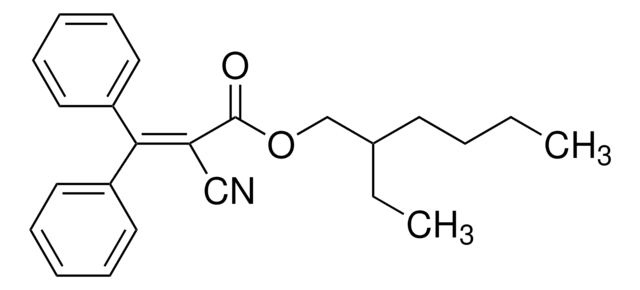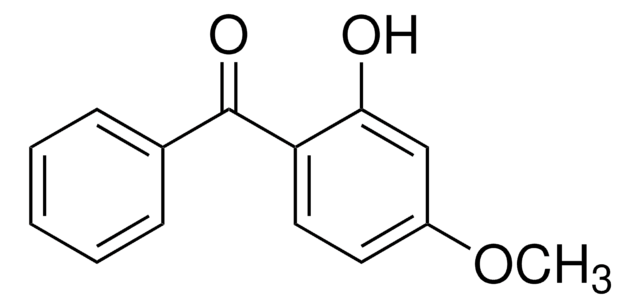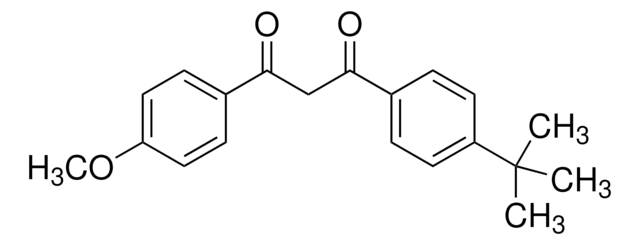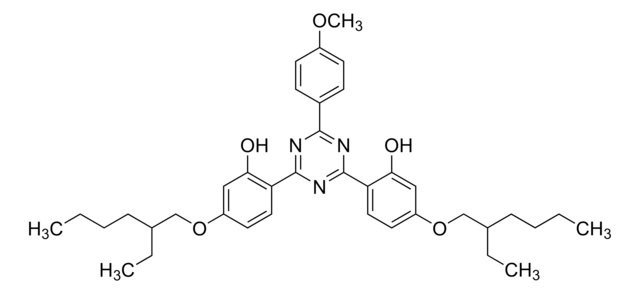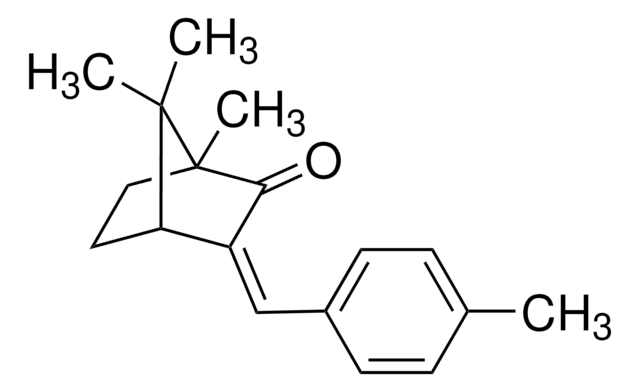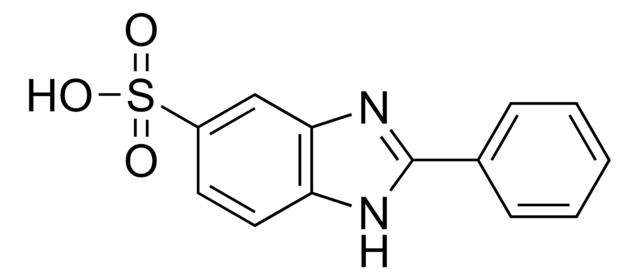78848
2-Ethylhexyl 4-methoxycinnamate
98%
Sinonimo/i:
4-Methoxycinnamic acid 2-ethylhexyl ester, OMC, Octyl methoxycinnamate
About This Item
Prodotti consigliati
Saggio
98% (GC)
98%
Forma fisica
liquid
Indice di rifrazione
n20/D 1.545
Stringa SMILE
CCCCC(CC)COC(=O)\C=C\c1ccc(OC)cc1
InChI
1S/C18H26O3/c1-4-6-7-15(5-2)14-21-18(19)13-10-16-8-11-17(20-3)12-9-16/h8-13,15H,4-7,14H2,1-3H3/b13-10+
YBGZDTIWKVFICR-JLHYYAGUSA-N
Cerchi prodotti simili? Visita Guida al confronto tra prodotti
Descrizione generale
Applicazioni
- Simultaneous electrochemical determination of three sunscreens using cetyltrimethylammonium bromide.: This study presents an electrochemical method for the simultaneous determination of sunscreens, including 2-Ethylhexyl 4-methoxycinnamate, using cetyltrimethylammonium bromide, highlighting the importance of analytical techniques in biochemistry (Cardoso et al., 2008).
- Relationship between the ability of sunscreens containing 2-ethylhexyl-4′-methoxycinnamate to protect against UVR-induced inflammation, depletion of epidermal Langerhans (Ia+) cells and suppression of alloactivating capacity of murine skin in vivo.: This study evaluates the protective effects of sunscreens with 2-Ethylhexyl 4-methoxycinnamate against UV radiation-induced skin changes, contributing to the understanding of immune responses in dermatological biochemistry (Walker et al., 1994).
Indicazioni di pericolo
Consigli di prudenza
Classi di pericolo
Aquatic Chronic 4
Codice della classe di stoccaggio
10 - Combustible liquids
Classe di pericolosità dell'acqua (WGK)
WGK 2
Punto d’infiammabilità (°F)
379.4 °F
Punto d’infiammabilità (°C)
193 °C
Dispositivi di protezione individuale
Eyeshields, Gloves
Certificati d'analisi (COA)
Cerca il Certificati d'analisi (COA) digitando il numero di lotto/batch corrispondente. I numeri di lotto o di batch sono stampati sull'etichetta dei prodotti dopo la parola ‘Lotto’ o ‘Batch’.
Possiedi già questo prodotto?
I documenti relativi ai prodotti acquistati recentemente sono disponibili nell’Archivio dei documenti.
I clienti hanno visto anche
Il team dei nostri ricercatori vanta grande esperienza in tutte le aree della ricerca quali Life Science, scienza dei materiali, sintesi chimica, cromatografia, discipline analitiche, ecc..
Contatta l'Assistenza Tecnica.

